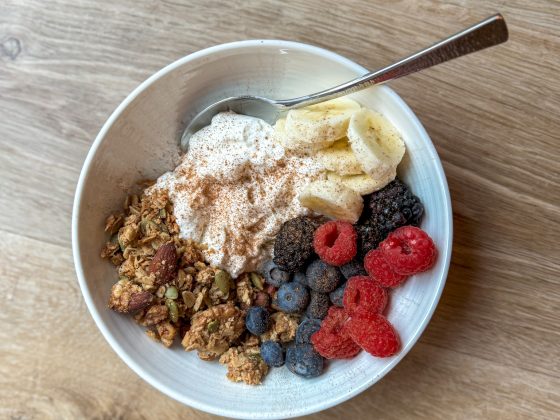When talking nutrition and the philosophy upon which Gratisfied was founded, I frequently refer to blood sugar balance. When I started to eat real, whole foods, while keeping the principles of insulin moderation in mind, I noticed improvements in my energy levels, mood, metabolism, mental clarity, and sleep. So what exactly is blood sugar balance and how can you achieve it? I go deep into the science in my online class The Beauty of Blood Sugar Balance, but for a quick crash course, I put together some key takeaways of what you need to know.
Symptoms of blood sugar mismanagement.
Your body is an amazing machine. Not only is it is always trying to achieve homeostasis (i.e. balance), but it will tell you when something is off. Digestion, skin, mood, sleep are all channels of communication. Symptoms of blood sugar mismanagement include:
- Uncontrollable sugar cravings
- Mood swings
- “Hanger” (feeling hungry and irritable)
- Feelings lightheaded or dizzy when hungry
- Lack of satiation between meals
- Feeling like you need to eat something sweet after eating
- Low energy, fatigue, the 4PM “slump”
- Nighttime snacking and/or sugar cravings
- Overeating, stress eating, binge eating
- Difficulty losing weight
- Poor digestion
- Needing to go to the bathroom in the middle of the night
- Extra belly fat
- Sugar spikes and crashes
Hunger is a hormonal experience. It’s not necessarily about the volume of food in your stomach (or lack thereof), but rather the functioning of leptin (your satiety hormone), ghrelin (your hunger hormone), and insulin (your storage hormone). Eating a spoonful of peanut butter versus an apple is a good way to illustrate the difference. While an apple (primarily a carbohydrate) might technically take up more room in your stomach, consuming a spoonful of peanut butter (primarily protein and fat) feels more satiating. This is because protein and fat are two macronutrients that interact with leptin to make you feel fuller for longer. Carbohydrates – while still necessary – don’t have the same effect. And because our society is plagued with “carbohydrate confusion,” the majority of Americans are walking around with mismanaged blood sugar. Not only does the quality of carbohydrates matter, but also that they are balanced with the other two macronutrients in each meal and/or snack.
Healthy fat + fiber + protein for blood sugar balance.
I’m a big advocate for eating whole, real foods. Those foods with only one ingredient, and meals composed of these foods, your body knows exactly how to read this information. It knows how to break down an apple, an almond, kale, salmon, spinach.
But there is more to it than just eating real food. Ensuring all three macronutrients are present on your plate promotes better blood sugar balance. Here is why:
- Fat: takes the longest to digest, keeping you fuller longer. Also interacts with certain hunger hormones, helping with satiety and energy. Necessary for brain function and hormonal balance.
- Fiber (from mostly green veggies and non-starchy carbs): slows down the release of insulin to prevent that blood sugar spike. Important for digestive health.
- Protein: sends the signal to your brain saying “I’m full.” Interacts with certain hunger hormones to create feelings of satiation, and also instigates the production of dopamine (reward hormone)
Blood sugar balances means a smoother blood sugar curve.
This leads us to the big question: what exactly are we trying to balance? Eating in. away to promote blood sugar management – and insulin moderation – means we are avoiding blood sugar spikes and subsequent crashes, essentially smoothing out our blood sugar curve.
Blood sugar is also known as glucose, and a small amount of glucose in the blood is needed for homeostasis. This number usually falls between 72 – 99mg/dL depending on the individual. When blood glucose goes over this range, the pancreas secretes insulin to clear the excess glucose from the blood.
Insulin is your “storage” hormone, and it is responsible for ushering the nutrients from your food to your cells. This is a good thing, we need nutrients to be stored. But there can be too much of a good thing. When it comes to blood sugar management specifically, insulin transports the glucose in your blood to the parts of your body that use it for energy: your muscles and liver. Glucose gets in to your blood in one of two ways: either from broken down carbohydrates, or when the hormone glucagon gets called to release stored sugar (glycogen) in your muscles for quick fuel. However, the space for stored sugar in your muscles and liver is limited, only about 400 grams total. Therefore, any excess glucose gets escorted by insulin back to your liver, converted to triglycerides (fat) and stored in your adipose tissue (fat cells).
Every time you eat a carbohydrate, it gets broken down to glucose. As a response, your pancreas releases insulin to do it’s job. A higher carbohydrate or higher sugar meal without the benefit of fiber will create a greater spike in blood sugar, which will then trigger a larger amount of insulin to be released. The faster the release of insulin, the more quickly the insulin clears the glucose from the blood, after which you will experience the subsequent blood sugar crash.
The other two macronutrients, protein and fat, also trigger the release of insulin, just not nearly as much. Higher quality carbohydrates, those we would categorize as real, whole foods, have the benefit of fiber, which slows down the release of glucose (and therefore insulin) in the blood. This also creates a smoother blood sugar curve. The timing of carbohydrate consumption, and what you eat first thing, is also something to consider.
Why a smooth blood sugar curve matters.
This brings us back full circle to the symptoms outlined above. Blood sugar management is so much more than weight management and metabolism. It has implications for your energy, mood, and brain health. Studies have shown that it’s chronically high levels of insulin and insulin resistance that are ultimately the driving forces behind many serious illnesses, such as cancer, heart disease, stroke, dementia and Alzheimer’s. To eat a whole, real foods diet while applying the principles of blood sugar balance to your plate can have profound and positive implications for both your short-term and long-term health.










